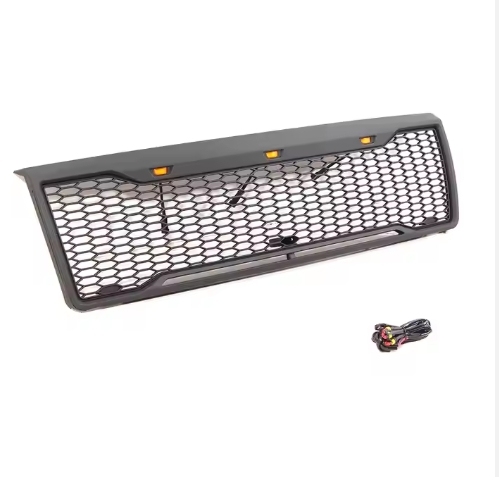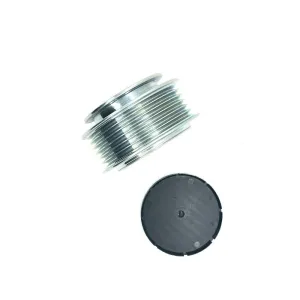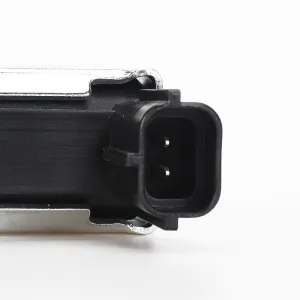The spark plug is an important component of the gasoline engine ignition system. It can introduce high-voltage electricity into the combustion chamber and cause it to jump across the electrode gap to generate sparks, thereby igniting the combustible mixture in the cylinder. It is mainly composed of wiring nut, insulator, wiring screw, center electrode, side electrode and shell. The side electrode is welded on the shell.

Introduction #
The spark plug, commonly known as the burner, is used to discharge the pulsed high-voltage electricity sent from the high-voltage wire (burner wire), breakdown the air between the two electrodes of the spark plug, and generate electric sparks to ignite the mixed gas in the cylinder.
The main types are: quasi-type spark plugs, rim-protruding spark plugs, electrode-type spark plugs, seat-type spark plugs, pole-type spark plugs, surface-flash type spark plugs, etc.
The spark plug is installed on the side or top of the engine. The early spark plug was connected to the distributor by the cylinder wire. In the past ten years or so, the engines on cars have basically been changed to the ignition coil directly connected to the spark plug. The working voltage of the spark plug is at least 10,000V. The high-voltage electricity is generated by the ignition coil from 12V electricity and then passed to the spark plug.
Structure #
1. Steel shell: The lower part of the steel shell is a fine thread, which is used to assemble with the spark plug hole in the cylinder head. The upper part has an external hexagonal nut, which is used to install the spark plug sleeve to tighten or screw out the spark plug.
2. The metal rod is the center electrode. The lower end of the metal rod is in contact with the upper end of the center electrode through the conductor glass body, and the upper end of the metal rod is equipped with a wiring nut.
3. There is a high alumina ceramic insulator between the steel shell and the center electrode to insulate the center electrode when electricity is energized.
4. The lowermost part of the steel shell is equipped with curved side electrodes.
5. There is a copper gasket in the middle of the outside of the steel shell.
Principle #
Under the action of high voltage, the air between the center electrode and the side electrode of the spark plug will quickly ionize, forming positively charged ions and negatively charged free electrons. When the voltage between the electrodes reaches a certain value, the number of ions and electrons in the gas increases like an avalanche, causing the air to lose its insulation, and the gap forms a discharge channel, causing a “breakdown” phenomenon. At this point, the gas forms a luminous body, a “spark”. As it expands due to heat, a “pop” sound also occurs. The temperature of this kind of electric spark can be as high as 2000~3000℃, which is enough to ignite the mixture in the cylinder combustion chamber.
Characteristic #
In spark plug standards, calorific value is usually used to characterize the thermal characteristics of the spark plug. The calorific value of the spark plug represents the balance ability of the spark plug insulator skirt to absorb and dissipate heat. The higher the calorific value. The stronger the balance between heat absorption and heat dissipation, the hot spark plug has a lower calorific value and the cold spark plug has a higher calorific value. Generally, engines with high power and large compression ratio use cold spark plugs with high calorific value; on the contrary, engines with low power and small compression ratio use hot spark plugs with low calorific value. Generally, the selection of spark plugs is determined by the factory through product shaping experiments and should not be replaced at will [7].
Develop #
With the development of the automobile industry, the performance of spark plugs is also constantly improved to improve the working quality of gasoline engines. For example, to improve the exhaust purification effect, wide gap spark plugs (gap 1.0~1.2mm) are used; to limit the noise of automobile radio waves , developed anti-interference spark plugs, etc.
In the past, the service life of spark plugs was very short. Automobile manufacturers stipulated that spark plugs must be inspected or replaced after the car has traveled 3,000km (or 6 months). With the improvement of spark plugs and related ignition devices, coupled with some measures for exhaust purification, the service life of spark plugs has been greatly improved. It is generally stipulated that the spark plug must be inspected or replaced after the car has traveled 10,000km (or every one year). Spark plugs with platinum electrodes have a longer service life and generally do not need to be inspected and replaced within 100,000km of driving.

 April 1, 2024
April 1, 2024 










